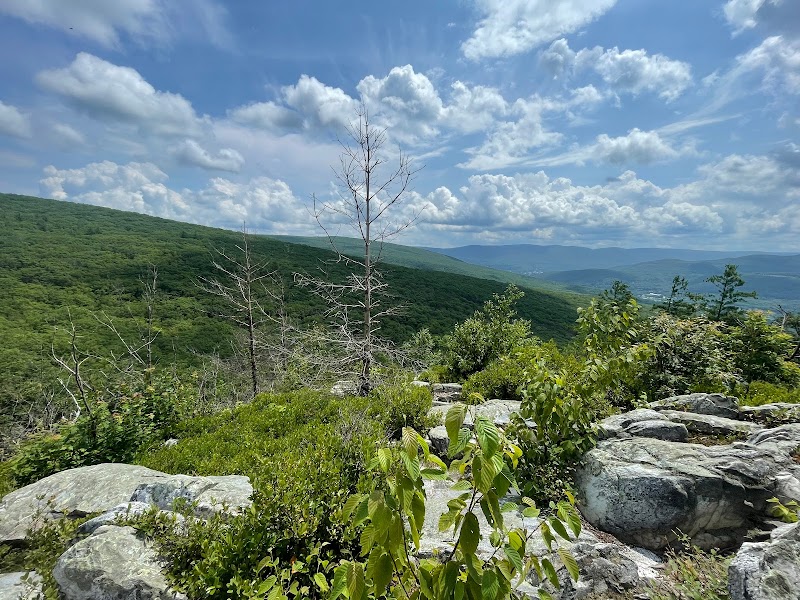
Exploring the Clark Art Institute Exhibitions: A Cultural Adventure in Williamstown, Massachusetts
The Clark Art Institute in Williamstown offers a unique cultural adventure where art and nature meet. With diverse exhibitions and thoughtfully designed spaces, it’s an ideal destination for visitors seeking immersive artistic experiences paired with the serene beauty of the Berkshires.
Plan Enough Time for Exhibitions
Allocate two to three hours to explore rotating exhibitions, gardens, and the art library without rushing.
Wear Comfortable Footwear
Choose sturdy shoes suitable for walking on indoor gallery floors and nearby outdoor paths around the grounds.
Visit on Weekdays for a Quieter Experience
Weekday visits typically offer more space and quiet for deeper engagement with the exhibitions compared to weekends.
Bring Camera and Note-taking Tools
Photography is permitted in some areas; carrying a camera and a notebook helps capture impressions and details for later reflection.
Exploring the Clark Art Institute Exhibitions: A Cultural Adventure in Williamstown, Massachusetts
The Clark Art Institute in Williamstown, Massachusetts, stands as a beacon for art lovers and adventurers alike, blending the thrill of discovery with the thoughtful contemplation of masterworks. Each exhibition on display invites you not just to observe, but to engage—offering a dynamic interplay of history, technique, and contemporary relevance that pulses with energy, as vibrant as the Berkshire landscape itself.
Approaching the Clark, the modern galleries rise quietly against the backdrop of forested hills, their glass walls reflecting the changing sky. Inside, the exhibitions rotate regularly, ranging from Old Master paintings and Impressionist treasures to thought-provoking contemporary installations. This variety ensures every visit holds fresh discoveries—from the intense brushstrokes of a 19th-century canvas to the stark, minimalist lines of modern sculpture.
Practical visit advice: plan at least two to three hours to fully explore the exhibitions, allowing time to absorb the art and visit the Clark’s exceptional art library or the surrounding sculpture gardens. The terrain outside offers gentle trails, perfect for digesting the visual feast while walking under tall hardwoods that seem to lean in, exchanging secrets with the shifting light.
The Clark’s curatorial approach is conscientiously immersive, pairing each show with detailed interpretive materials and occasional artist talks or guided tours. Their digital app and website provide updated exhibition schedules and ticketing information. Weekday visits often yield a quieter experience, while weekends bring a steady hum of curious visitors and sometimes live music events in the outdoor space.
For those keen on extending the adventure, Williamstown offers charming dining spots and local inns, making it an ideal cultural stopover alongside outdoor activities like hiking nearby Mount Greylock—the highest point in Massachusetts. This mix of intellectual and physical adventure creates a balanced itinerary for visitors.
Remember to wear comfortable shoes for both gallery floors and the outdoor paths, bring water, and charge your phone or camera to capture moments where art and nature converse. The Clark isn’t merely a destination—it’s a challenge to engage more deeply with creativity and context, inviting you to see the world with sharpened eyes.
Whether it’s your first visit or a return trip, expect an exhibition experience fiercely alive and thoughtfully constructed, one that respects the art, the artist, and you, the traveler, as an essential component of the ongoing narrative.
Nearby Trips
All Adventures
Boat Charters
Water Activities
Adventures near Williamstown, Massachusetts
Discover the unique and memorable adventures that make Williamstown, Massachusetts special.
Frequently Asked Questions
Are photography and sketching allowed inside the Clark Art Institute?
Photography is permitted in certain parts of the museum without flash, but sketching is generally allowed with pencils only. Always check signage or staff for specific exhibition restrictions.
Is there parking available at the Clark Art Institute?
Yes, the Clark provides ample free parking for visitors adjacent to the main entrance, with additional overflow parking during peak times.
Are guided tours available for exhibitions?
Guided tours are regularly scheduled and included with admission. They offer insightful perspectives on current exhibitions and can also be booked privately.
Can I visit the outdoor sculpture gardens without an admission ticket?
Access to the sculpture gardens is included with museum admission; however, during special events, separate tickets may be required.
What local wildlife might I see around the Clark grounds?
Visitors often spot eastern gray squirrels, white-tailed deer, and various bird species like woodpeckers and warblers among the trees bordering the grounds.
How accessible is the Clark Art Institute for visitors with mobility needs?
The Clark is fully ADA accessible, featuring ramps, elevators, and accessible restrooms to accommodate all visitors comfortably.
Recommended Gear
Comfortable Walking Shoes
Provides support for exploring the galleries and surrounding outdoor paths comfortably.
Water Bottle
Staying hydrated is critical, especially during warmer months or when visiting outdoor spaces.
Layered Clothing
Helps accommodate variable indoor and outdoor temperatures during transitional weather.
Camera or Smartphone
Useful for capturing artwork highlights and the scenic Berkshire environment.
Local Insights
Hidden Gems
- "The rarely visited perennial garden displays seasonal blooms that contrast beautifully with the museum’s modern architecture."
- "A quiet overlook near the walking trails offers one of the best views of Mt. Greylock’s southern face."
Wildlife
- "Listen for the distinctive call of the barred owl in early mornings, especially in fall and spring."
- "Eastern box turtles occasionally appear near the wooded paths around the institute."
History
"Founded in 1955 by Robert Sterling Clark, the institute was designed as a center for art, learning, and nature integration, reflecting the founder’s passion for combining culture with environmental beauty."
